The Contemporary Buttercream Bible (7 page)
Read The Contemporary Buttercream Bible Online
Authors: Christina Ong Valeri Valeriano

it gently with your finger.
71
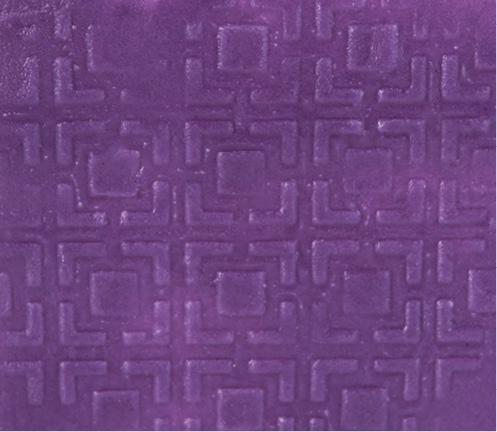
72
Covering Boards
Since our method of cake decorating is is all about
buttercream, you might guess that we do not use
any other medium. However, it is tricky to cover
your board with buttercream so we have thought of
a more creative way of doing it.
In everything we do, we try to make the technique
easy, be adventurous and create brilliant results. So if we are using a cake board, we always choose the
most exciting materials we can source, like fancy
papers, fabrics, and colourful tissue papers. To
these you can add on accessories that will
complement the design of the cake. Make sure you
don’t over do it – avoid colours that clash with your cake design, and make sure nothing upstages your
cake, which should, after all, be the centre of
attention.
73
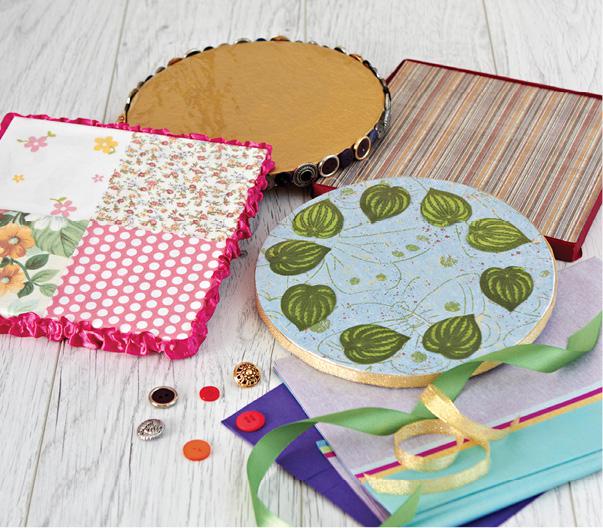
You will need…
• Ribbons, buttons, ruffles, lace
• Wrapping paper, colourful tissue paper, crêpe
paper, fabrics
• Glue gun/stick (hot melt), double sided tape,
clear tape, adhesive spray, craft glue
• Scissors
• Pen or pencil
• Clear cellophane, contact paper/sheet
74
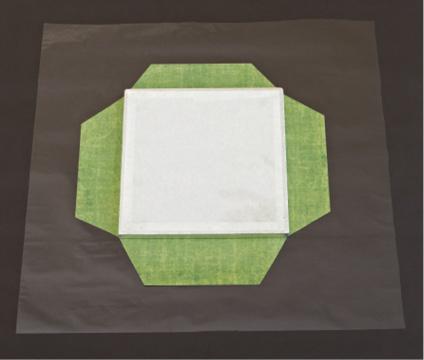
SQUARE
Whatever the size of cake board you are covering,
cut your chosen paper or fabric about 5–7.5cm
(2–3in) and your cellophane or contact paper about
13–15cm (5–6in) larger all round than the board,
then cut across the corners as shown. Place your
paper on the board and fold all the sides under,
then secure on the back of the board with clear
tape. Make sure that the paper does not have any
lint, icing or any debris stuck to it, then repeat the same process with your cellophane or contact paper
to cover it. Put matching ribbons or buttons or
anything else you have chosen around the edge your
board.
75
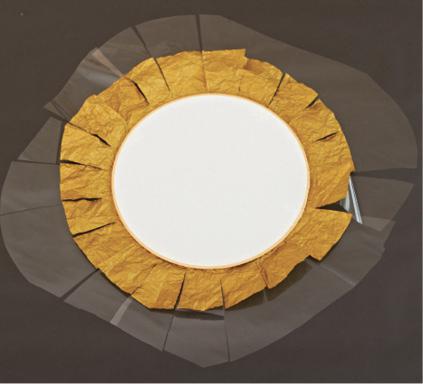
ROUND
Covering a circular board is basically the same as
covering a square. Follow the instructions above,
but instead of snipping the corners, you just have to make small cuts approximately 2cm (1in) apart and
up to the board all the way around your paper
before you secure each piece with clear tape. Repeat
with the cellophane or contact paper, then finish
with accessories around the board.
Tip
You may come across all sorts of different
shapes of board – hearts, ovals and hexagons.
76
Follow the advice for covering a square board
for all the angular shapes, and the instructions
for a round board for the curvy ones.
77
Dowelling
Anything that is complex and made up of different
parts will need some structure to hold everything
together in one piece. The same principle applies to
stacking layers of cake. You will need plastic or
wooden dowels, inserted properly into the lower
tiers of a cake, to bear the weight of the layers above and to make sure that each cake layer does not get
squashed and collapse.
78
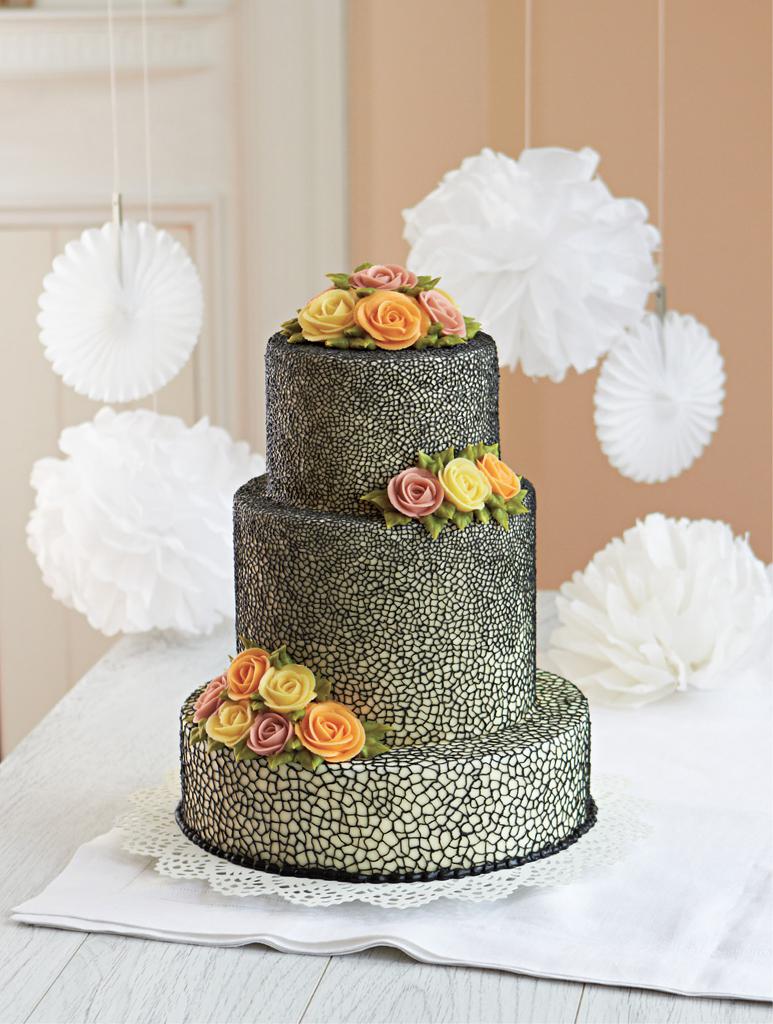
79
Tip
Instructions for making the cake above can be
found in the Lace tutorial in the Textiles Effects
chapter.
You will need…
• Dowel rods, plastic or wooden
• Wire cutter, big scissors or serrated knife
• Pen or pencil
• Thin cake board
• Ruler
• Cocktail stick (toothpick)
1 Measure the height of the bottom tier of your cake
with a ruler. This measurement will be the guide for
cutting your dowel rods. Use wire cutters, big
scissors or a serrated knife to carefully cut as many dowels as you need (see step three) to the same
length (A).
80
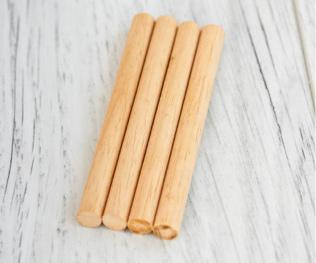
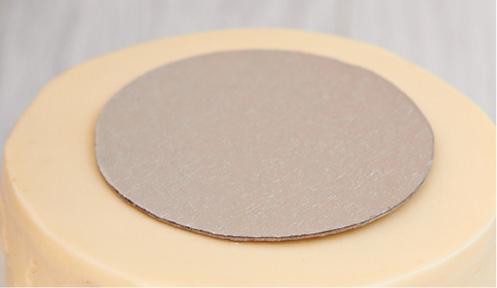
A
2 On a piece of paper or a thin cardboard, mark out
the outline of the next tier up and cut the paper or
card to size. Centre this template on the bottom tier of the cake and use a cocktail stick (toothpick) to
clearly mark the outline (B).
B
3 Mark the position for the dowels and insert the
dowel rods into the bottom tier, evenly spaced
81
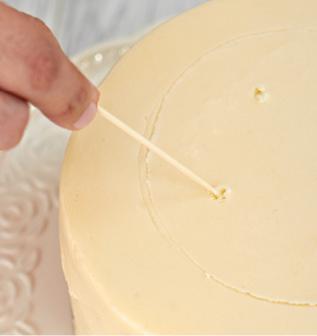
about 4cm (11⁄2in) in from the edge of the marked
outline (C). Push the dowel rods straight down until
each touches the cake board (D). The number of
dowels to put into the cake depends on the size of
the cake. The bigger the cake, the more dowels
required.
C
82
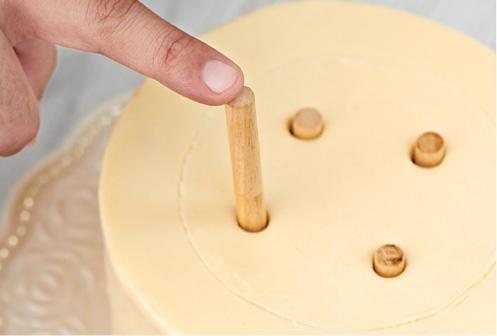
D
4 Repeat this procedure for every tier on the cake. If it is really a tall cake, you will need to insert a long dowel straight through all the tiers, through the
centre of the cake to stabilize it.
Tip
To measure the height of your cake tier you
can push a dowel right into it from the top until
it touches the cake board, then mark the place
on the dowel that the cake frosting reaches,
using a pencil or pen, then remove the dowel
and cut it off at the marked length.
